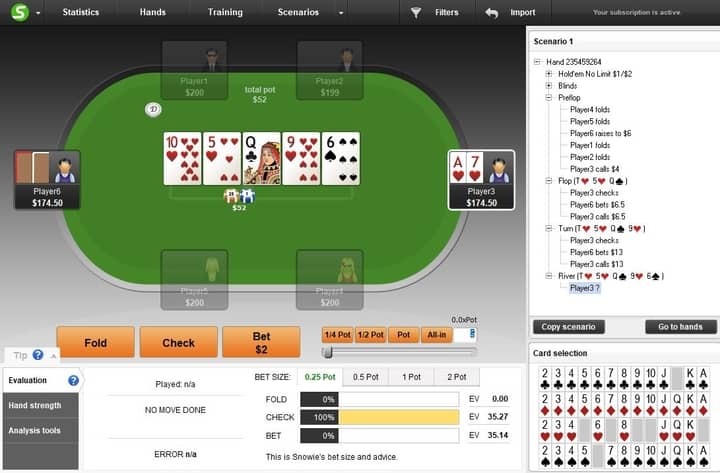
One very risky cash game move that you’ll see experienced poker players make involves shoving on the flop with a flush draw. The obvious goal here is to force a fold because your flush is only going to connect 35% of the time (from the flop). This being said, it’s definitely worth further examining why somebody would shove in these situations.
Fold Equity
What Is a Flush Draw? A flush draw in poker, also known as a four-flush, is when you have four cards of the same suit and need only one to complete the draw and make five cards of the same suit. This can mean you hold two cards of the same suit and there are two on the board, or you hold one card of the suit and there are three more on the board. A powerful draw that combines the open ended straight draw with a flush draw. This draw is also the most probably way to make the highest ranked made hand in poker: the straight flush. In theory, the open ended straight flush draw can make a straight with 6 possible cards and a flush with 9 possible cards. Straight Flush Probability. We start by finding the probability of a straight flush. A straight flush is a hand with all five cards in sequential order, all of which are of the same suit. In order to correctly calculate the probability of a straight flush, there are a few stipulations that we must make. As you can see in the above table, if you’re holding a flush draw after the flop (9 outs) you have a 19.1% chance of hitting it on the turn or expressed in odds, you’re 4.22-to-1 against. The odds are slightly better from the turn to the river, and much better when you have both cards still to come.
The main reason for shoving with a flush draw is that you’re looking for fold equity – a.k.a. what percentage of the time you think an opponent will fold. For example, if you go all-in with Ks-Qs on a flop of Jh-8s-4s and think your opponent will fold 75% of the time, this is probably a +EV move (based on pot sizes). So the tighter your opponent is, the more likely you are to gain fold equity from shoving with flush draws.
Other Outs


Many people fail to account for all of their outs when deciding whether or not to shove. For example, let’s say that you hold Ad-Kd on a flop of Td-6d-2h; assuming your opponent calls and shows Q-Q, you actually have a 54.44% chance to win the hand. You’ve got 9 outs with the flush and another eight outs with your two overcards. Combine this with good fold equity and shoving on the flop is definitely a +EV move.
Multiple Players

So far we’ve discussed how shoving with a flush draw on the flop can be a very good move in certain situations – against one player that is. However, if you have a feeling that two or more players could call you, it’s rarely ever a good decision to shove with flush draws. In most cases, you won’t run into this problem. However, if you’re on a table full of calling stations, you could very well be looking at a -EV situation.
One more point worth making in all of this is that you should usually be chasing a nut flush (or at least king-high) when shoving. After all, you’d hate to push your chips in with Qd-Jd, only to be called with Ad-Kd.

Tags: flush draw, fold equity, nut flush, poker, poker players
One very risky cash game move that you’ll see experienced poker players make involves shoving on the flop with a flush draw. The obvious goal here is to force a fold because your flush is only going to connect 35% of the time (from the flop). This being said, it’s definitely worth further examining why somebody would shove in these situations.
Fold Equity
The main reason for shoving with a flush draw is that you’re looking for fold equity – a.k.a. what percentage of the time you think an opponent will fold. For example, if you go all-in with Ks-Qs on a flop of Jh-8s-4s and think your opponent will fold 75% of the time, this is probably a +EV move (based on pot sizes). So the tighter your opponent is, the more likely you are to gain fold equity from shoving with flush draws.
Other Outs
Many people fail to account for all of their outs when deciding whether or not to shove. For example, let’s say that you hold Ad-Kd on a flop of Td-6d-2h; assuming your opponent calls and shows Q-Q, you actually have a 54.44% chance to win the hand. You’ve got 9 outs with the flush and another eight outs with your two overcards. Combine this with good fold equity and shoving on the flop is definitely a +EV move.
Flush Draw Poker
Multiple Players
So far we’ve discussed how shoving with a flush draw on the flop can be a very good move in certain situations – against one player that is. However, if you have a feeling that two or more players could call you, it’s rarely ever a good decision to shove with flush draws. In most cases, you won’t run into this problem. However, if you’re on a table full of calling stations, you could very well be looking at a -EV situation.
One more point worth making in all of this is that you should usually be chasing a nut flush (or at least king-high) when shoving. After all, you’d hate to push your chips in with Qd-Jd, only to be called with Ad-Kd.
Flush Drawer Pulls
Tags: flush draw, fold equity, nut flush, poker, poker players